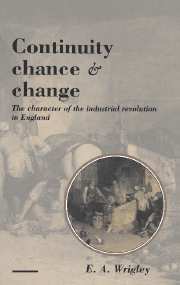2 - The advanced organic economy
Published online by Cambridge University Press: 05 June 2012
Summary
Any pre-industrial economy was obliged to accept certain limits to growth set by the fact that the land was almost the sole source not only of food but of the great bulk of the raw materials used in manufacture. Since land was in fixed supply, production could only be expanded by obtaining larger and larger outputs from each existing acre of farmland or by breaking in inferior land, but at some stage it seemed unavoidable that diminishing returns would take hold, making further expansion progressively more difficult and costly. All pre-industrial economies were therefore by definition subject to a form of negative feedback, unable to engender changes capable of securing rising real incomes for the mass of the population. As growth progressed, the obstacles to further growth grew ever more pressing. It was their appreciation of these constraints which led the classical economists to make use of the concept of the stationary state as a device to epitomize the nature of the limits to growth, and to disbelieve in the possibility of a radical and permanent upward movement in real wages.
E pur si muove, – and yet the earth did move; there was a breakout from the confines of the pre-industrial economy. In this chapter I shall try to describe the nature and the extent of the changes taking place in the two centuries preceding the conventional date of the industrial revolution; the kind of growth that was in the mind of Adam Smith when he wrote the Wealth of nations; the nature, in short, of an advanced organic economy.
- Type
- Chapter
- Information
- Continuity, Chance and ChangeThe Character of the Industrial Revolution in England, pp. 34 - 67Publisher: Cambridge University PressPrint publication year: 1988



